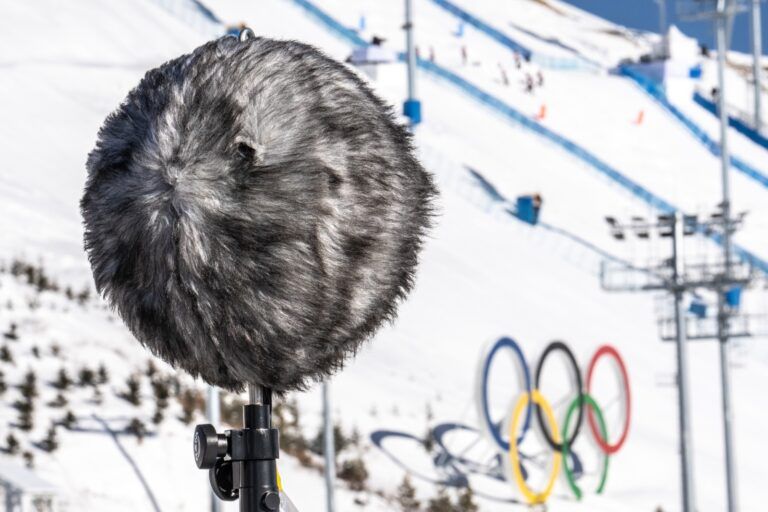
Next Generation Audio and Realverso, essential to bring immersiveness closer to viewers
- “It has become clear that the 5.1.4 format is ideal for the Olympics”, says Nuno Duarte from OBS.
- “With the Realverse we want to be able to transport ourselves and transmit this feeling of presence of a real place with real people”, Pablo Pérez from Nokia.
The third day of the 4K HDR Summit has brought with it issues that a few years ago were unthinkable and are now a reality in the audiovisual World. Immersive 5.1.4 audio, quality productions, Realverse, 3.0 television or Ultra High Definition have been some of the star topics discussed today by international speakers such as Nuno Duarte from OBS, Javier Notarianni from Walt Disney Company, Pablo Pérez from Nokia or Jonathan Broughton from the EBU.
Gold medal in the Olympic Games. for Immersive Audio 5.1.4
The 5.1.4 Immersive Audio that has been implemented in the Tokyo 2020 and Beijing 2022 Olympic Games has been one of the star themes on this third day of the 4K HDR Summit. Nuno Duarte, Sound Technician and Audio Manager of the Olympic Broadcasting Services (OBS) has been in charge of revealing all the keys to this successful format. “With him, we have taken a step forward in terms of innovation. Furthermore, with such a small impact on broadcast infrastructure, the deployment of immersive audio technologies in large-scale sports production has proven to be particularly sustainable. Although we all still have a lot to learn, it has become clear that the 5.1.4. It is the ideal for the Olympics”.
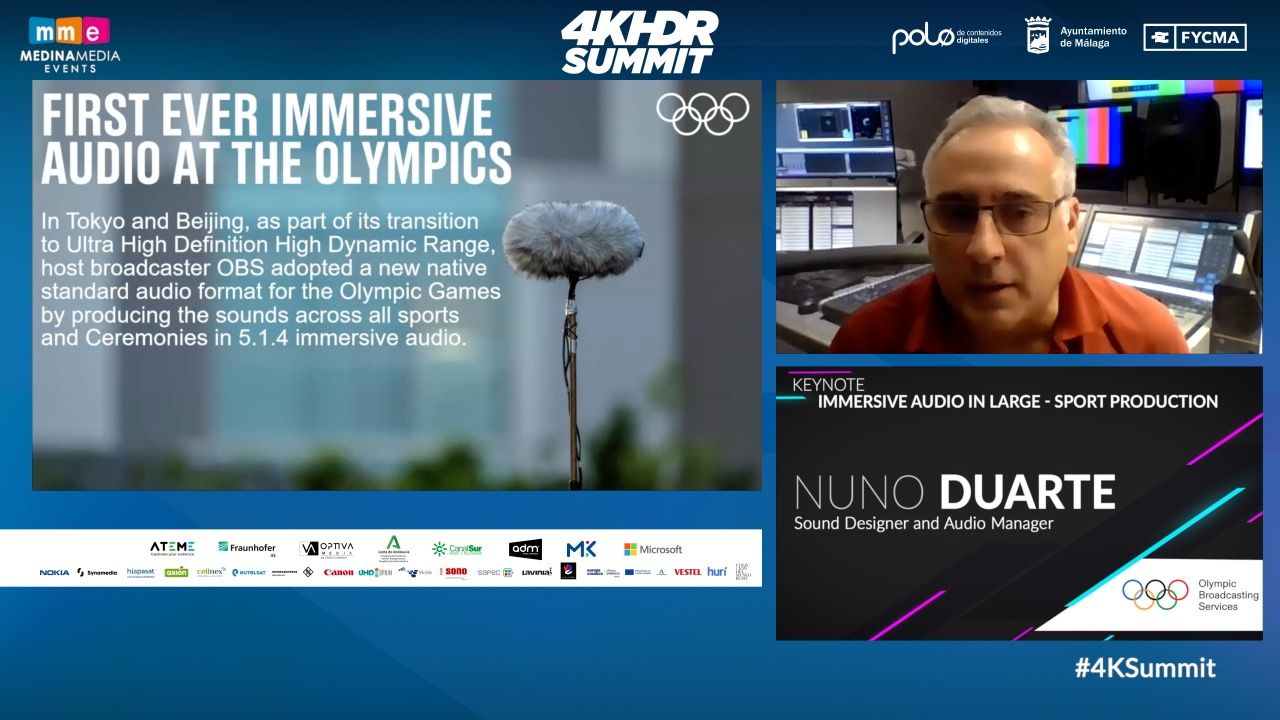
One of the most important points of the 5.1.4 audio format. is that it is capable of covering all sound fields in 360º. In Nuno’s words, “it is very important in sports broadcasts to meet 4 requirements: cover the front, left and right, as well as the rear on both sides as well. For example, when we are in a stadium and we catch the sound of an advertiser, we also catch the reaction of the public by covering the back”.
OBS implemented immersive audio for broadcast coverage of the Tokyo 2020 and Beijing 2022 Olympic Games as part of its transition to UHD HDR. The host broadcaster adopted a new audio format, producing the sound of all sports, along with the opening and closing ceremonies, in immersive 5.1.4 audio. OBS managed to produce two consecutive Olympic Games within just six months of each other. Despite this, immersive audio has been successfully implemented into live coverage of more than 100 sporting events in total. To achieve this, Duarte explains, OBS had to “hire 300 audio engineers and hundreds of broadcast engineers and producers. For all of them, despite being a new experience and a new territory, what was achieved was highly satisfactory”.
“It has been a long road of development and testing that we have had to do with all the formats until we find the one that was going to become the standard in Olympic productions,” says Duarte.
Something very positive is that the audio implementation period is very short: “Although it is planned in advance, the implementation of the audio in the venues does not exceed two or three days, so the entire setup has to be simple and clear from the start.” the beginning”, says Duarte. Throughout the process of defining a new sound format, the specific nature of the Olympic Games had to be considered. “When organizing the Olympic Games, it must be taken into account that a large number of events take place at the same time, during a period of two weeks, and that each sport has its own requirements and characteristics (that is, it can be indoors or outdoors). etc.)”, says Duarte.
Looking to the future and the upcoming Olympic Games, “the focus has now shifted to more creative production. The big moment for audio was in Tokyo, when the new format was introduced. After this achievement, I believe that the broadcast industry must now embrace this format and make it available to every home”, concludes Duarte.
The Realverse, a reality that is getting closer
Pablo Pérez, Scientific Leader of the Nokia eXtended Reality Lab, spoke today about a concept that is becoming more and more relevant today, the Realverse. Pérez states that “the Metaverse is a feeling that the location you are in is real and that you are really there. You also feel that these people around you are people who are really with you. You also feel that your body, the representation of the avatar that appears in the scene, is actually your body”.
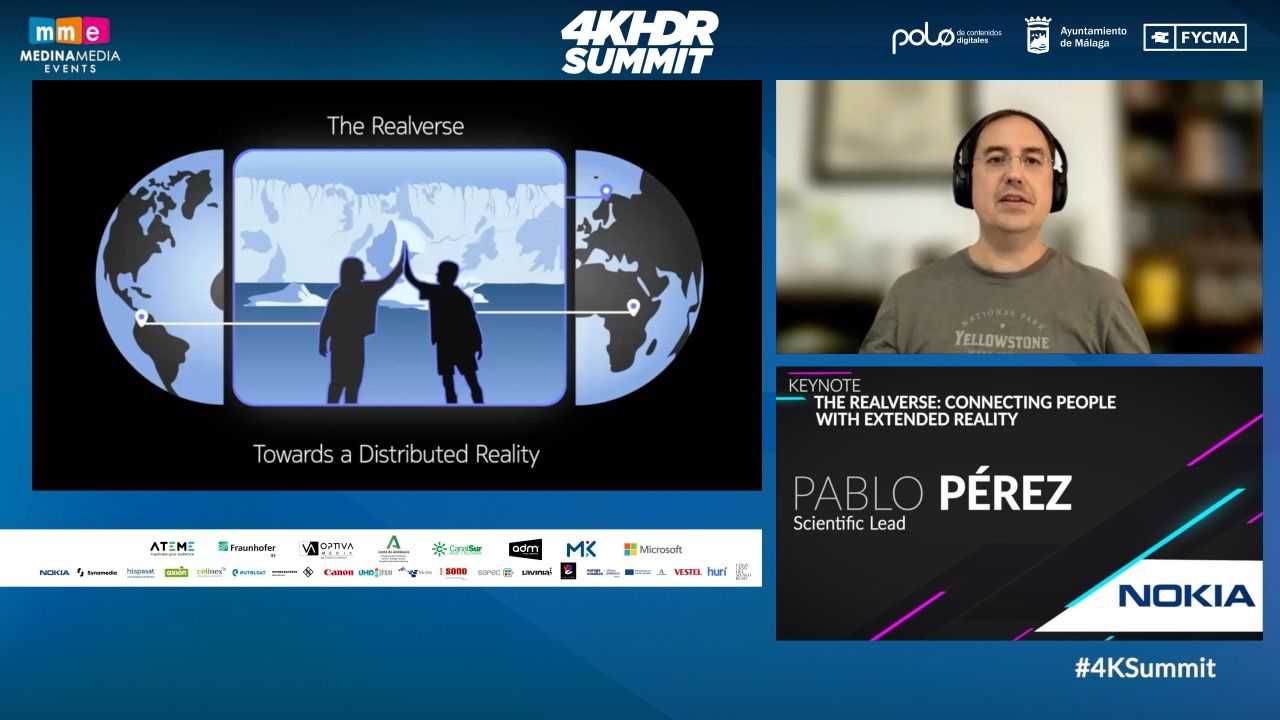
However, from Nokia they go a step further by talking about Realverse as “the feeling of really being on the site. XR (Extended Reality) is capable of treating your senses in a way that will create the illusion of being in a different place, you feel that the place is real. This is known as ‘Spatial Presence’. On the other hand, it is worth noting the ‘Social Presence’, that is, the feeling that the people or robots that surround you or that are floating in space are really with you. You also feel like your body is really you.”
For Pérez, the objective to be achieved with the Realverse is clear: “Instead of creating a new sensation of presence, we want to be able to transport ourselves and transmit this sensation of presence of a real place with real people. We call this the Realverse.”
“The idea of using XR is not to recreate the world, but to create a new reality, which is a fusion of your local reality and the place you want to teleport to and the people you want to be with, in the most transparent way possible. All of this requires a new generation of technology,” says Pérez.
Technology as a pillar for quality productions and TV 3.0
Jorge Notarianni is the Vice President of Production and Technical Service of The Walt Disney Company Latin America. He wanted to highlight, on this third day, the fundamental role that technology plays when carrying out the productions that are underway in their distribution channels. “The market is constantly changing. We have more control over the cameras and we capture more pixels, 4K, 8K…However, we are human and we have a limitation when it comes to seeing the differences. We can use 4K or 8K, but we must take into account if the user is going to see it in the cinema (where the difference can be noticed) or on their mobile phone”.
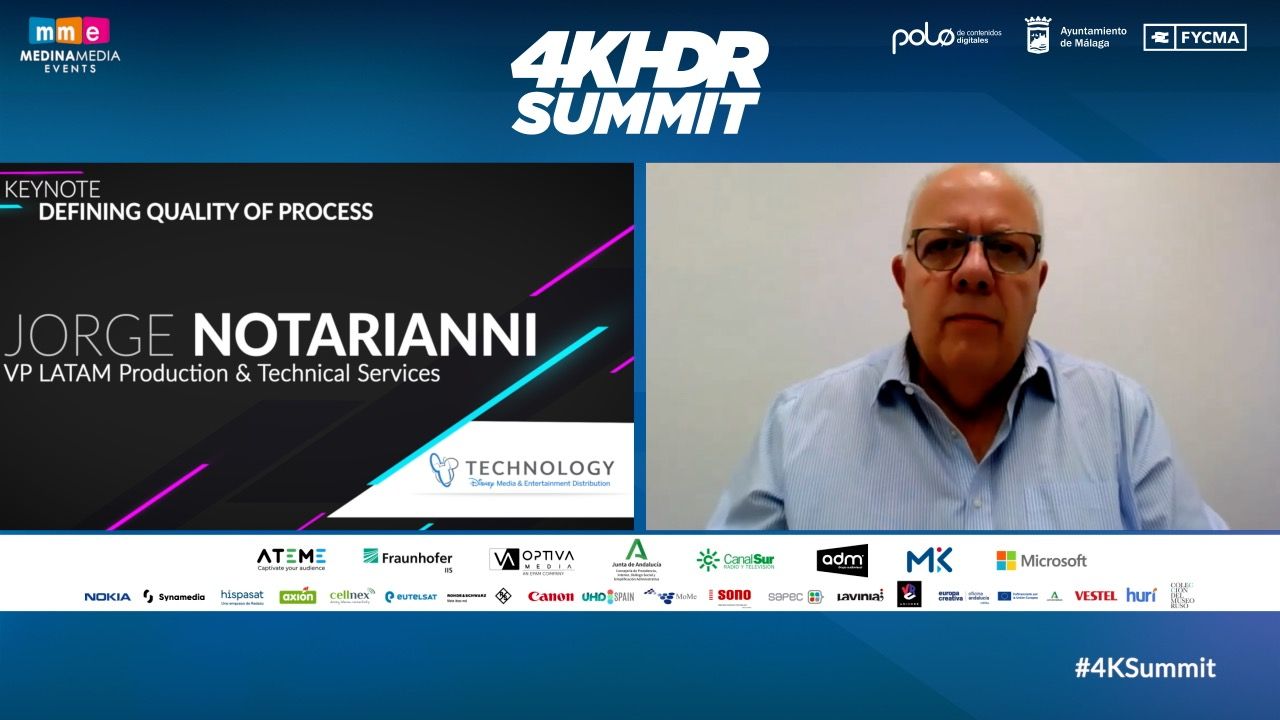
Notarianni also highlights another very important aspect when it comes to making quality productions. And it is that when recording in HDR, the quality of the camera is not only important. For the final product to be perfect, light is very important. “The more light quality there is, the greater amount of detail in the image the user will capture. Despite the fact that post-production work is very important, not everything can be fixed with it. Therefore, it is essential to provide the highest quality in each process to guarantee the user that the final product is the best”.
For Notarianni, technology now has a great advantage to be able to produce high-quality productions: “The advantage now is that the technology is digital, it is an advantage with the program, we can manage many things. We have an open stage to produce, capture, manage, change. The tools that technology provides in the digital environment are phenomenal. That is the question. The great change of networking”.
For his part, Carlos Cosme, Researcher at Globo TV, has also revealed today one of the great novelties that Brazil will present in the medium term. This is the project called TV 3.0 Among other things, an improvement in audio quality will be achieved. “For the next 3.0 generation in Brazil, we will have MPEG-H Audio”, acknowledges Cosme. The Brazilian country has been using the 2.0 model since 2007, although according to Carlos Cosme himself, “it will not be until 2025 when the launch of TV 3.0 is scheduled.”
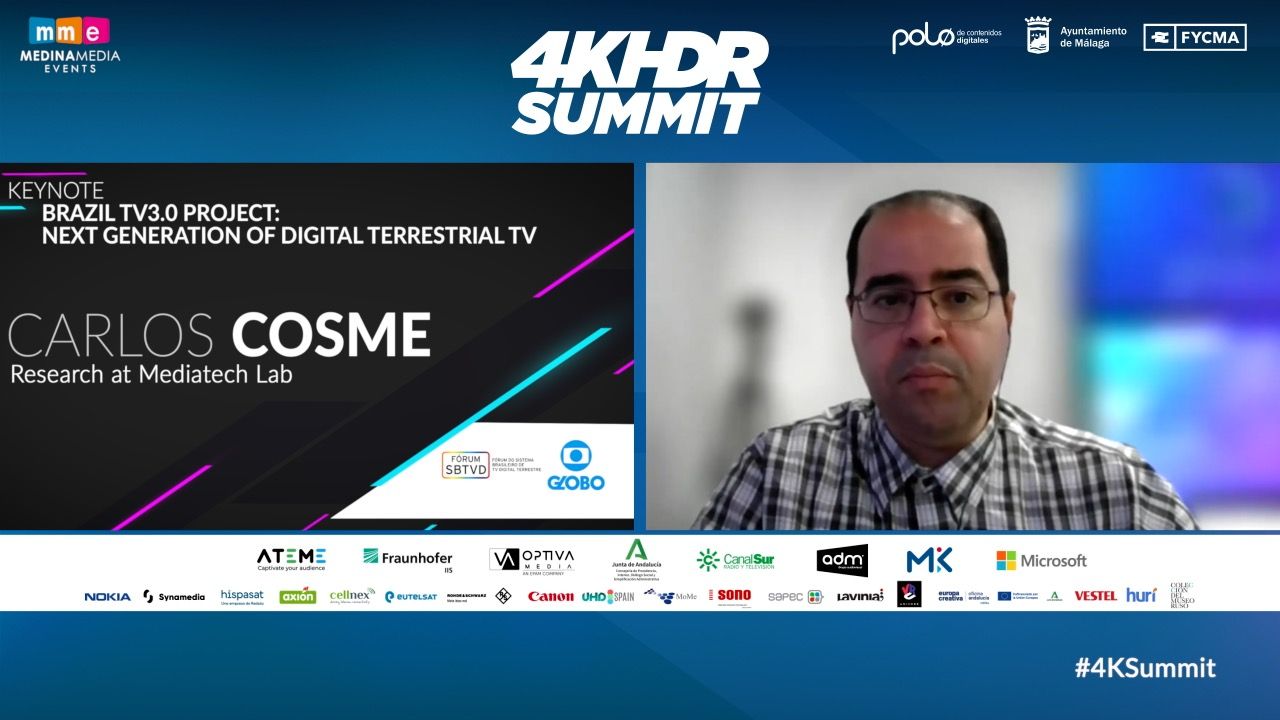
For Cosme, at present, TV 3.0 “needs more support on televisions to support the next generation format.” However, he is very optimistic about the interest aroused in Latin America: “Many countries are very interested in what we are doing. They want to use our system and it can be adapted to the needs of each country”.
The present and future of Ultra High Definition in Europe
Jonathan Broughton, Head of Strategy for the European Broadcasting Union (EBU), which has an audience of over a billion people worldwide, has analyzed the present and future of Ultra High Definition in Europe. For him, it is very important that both broadcasters and the consuming public are clear about the specifications they must comply with. “On the one hand, the content (the broadcasters) and on the other hand the devices used by the audience itself. All this in order to guarantee that the public can enjoy high-quality services in the future”. In addition, he sees the role of UHD as essential to increase audiovisual quality. “Public broadcasters, in general, are trying to achieve quality in the content they offer and all this happens by involving UHD TVs.”
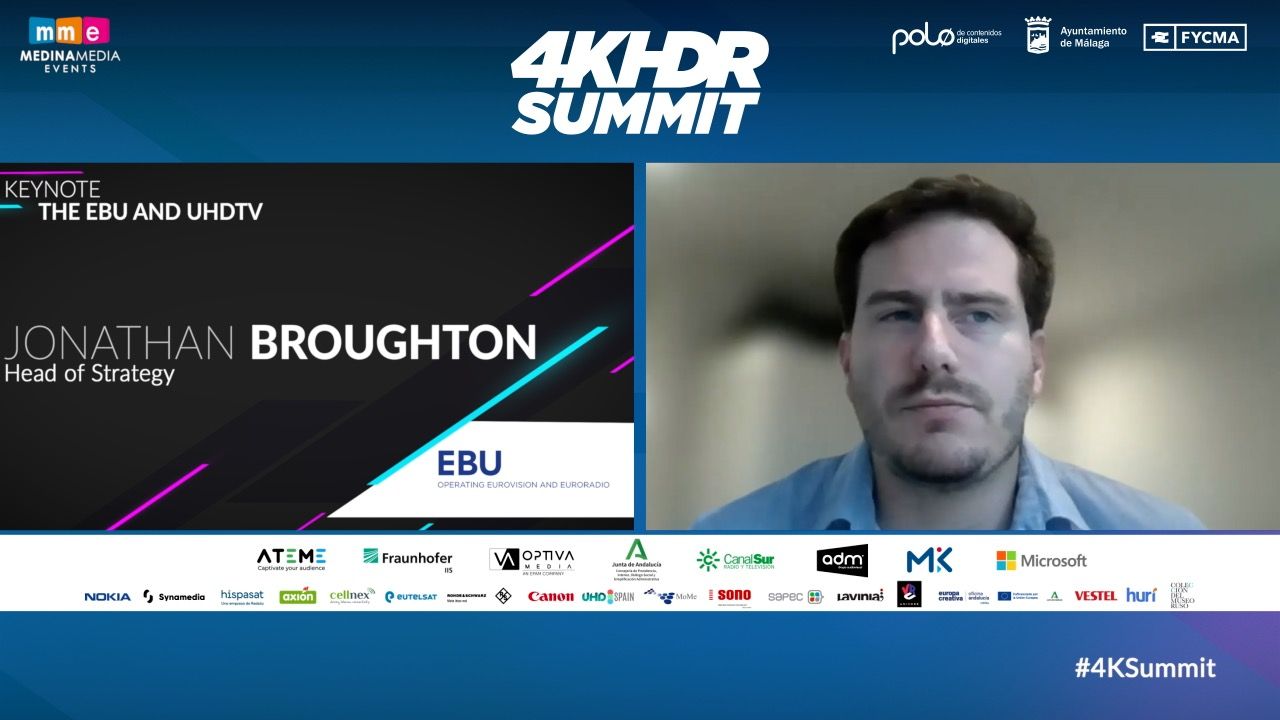
Jonathan Broughton himself predicted how he saw the future for the media. “The next few years will see a dramatic transformational change in order to take advantage of the wide range of new technologies and the changing needs of the audience.”
For his part, Cristiano Benzi, Global SVP – Professional Video at Eutelsat, spoke of the large satellite deployment they have in UHD terms: “Right now we have UHD channels on 6 satellites. Globally we have 30 channels but some of them are replicated in many different orbital positions or in the same orbital position but on different platforms so there are 24 unique channels.”
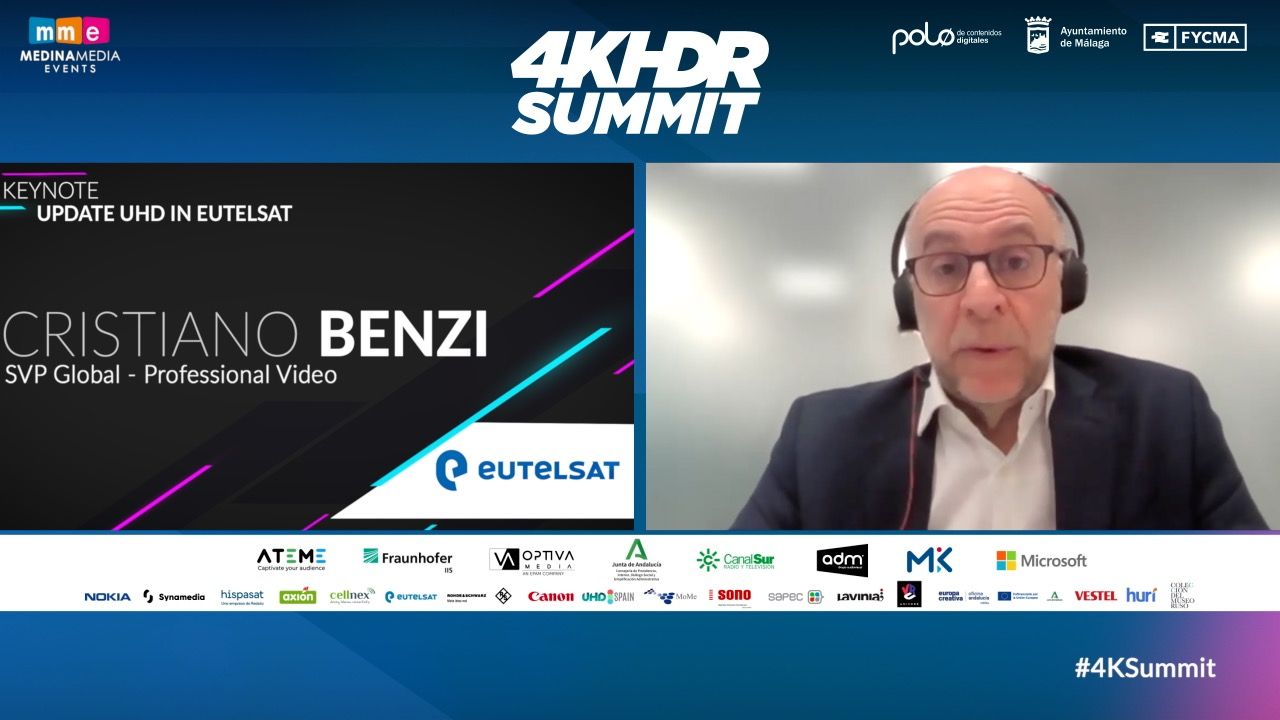
“We tend to distinguish the UHD channels, which are really the big media groups like RAI, SKY, Polsat, but also a few years ago we started collaborating with independent publishers. We have them to be present on the satellite with the typical thematic channel that they produce themselves and distribute later”, affirms Benzi.
Spanish accent on the third day of the 4K HDR Summit
On this highly international day, the interventions of Jorge Rodríguez, Head of Product Management at Hispasat; José Manuel Sanz, Head of Technology and Laboratory at Cellnex and Cristina Peñas, Commercial Director of Axión.
On the one hand, Jorge Rodríguez has spoken about the future of UHD via satellite. “We can expect this transition to Ultra High Definition to grow during the 2022 World Cup. In addition, the US ad market is also growing.” Although for this growth to be possible, Jorge Rodríguez sees it as essential to improve a key aspect. “We need connectivity. The reality is that there are 2.7 billion people without internet connectivity around the world.
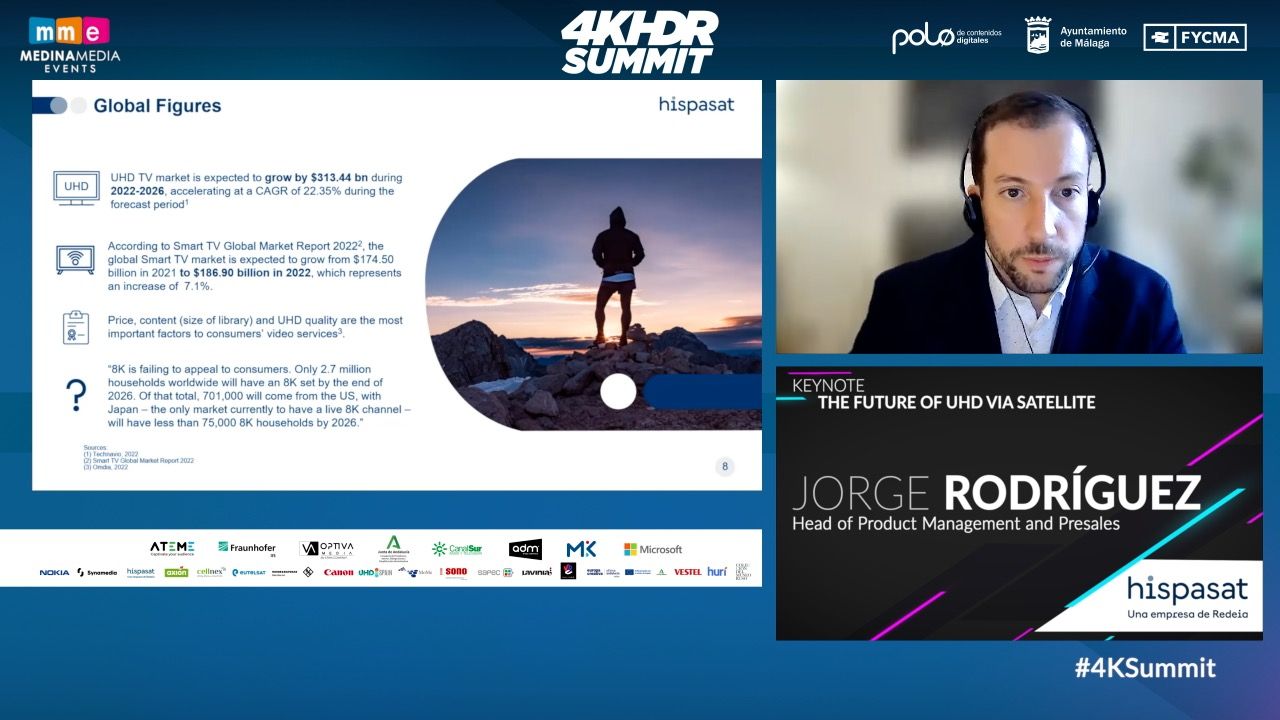
On the other hand, José Manuel Sanz has based his presentation on the question “Is DTT ready for UHD?”. Regarding this, Cellnex’s Head of Technology and Laboratory has seen fit to clarify that DTT is more than prepared for Ultra High Definition. “DTT has been, is and will continue to be an innovative and competitive platform. However, to continue operating, innovating and competing during the decade and up to 2030, it will be necessary to increase transmission quality, develop hybrid services and add new reception modes”.
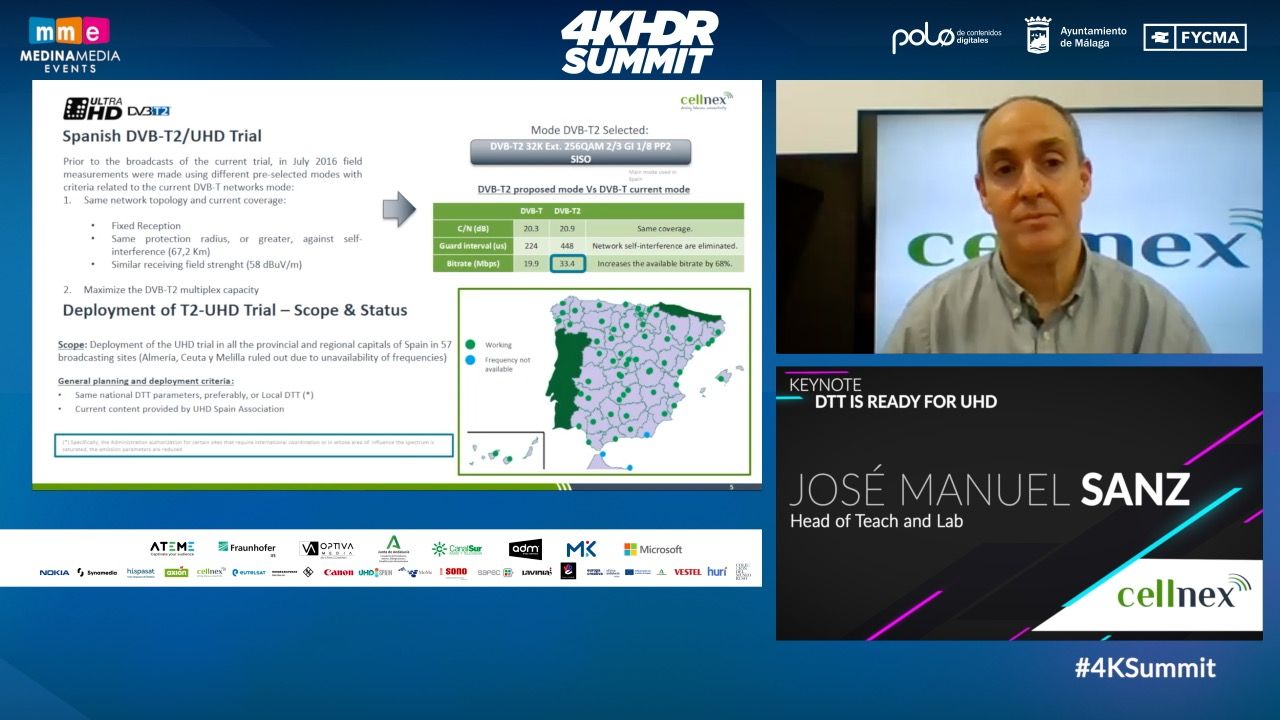
To conclude this “Solutions’ Day”, Cristina Peñas, Commercial Director of Axión has given the vision of a broadcaster and infrastructure manager from the point of view of Ultra High Definition. “For this whole world of high-definition content and the virtual world to work well, we need a world of real infrastructure to support it.” In addition, looking to the future, he is confident that “at the world radiocommunications conference next year, this availability of UHF spectrum will be continued to continue providing these services and universally guarantee free high-definition content.”
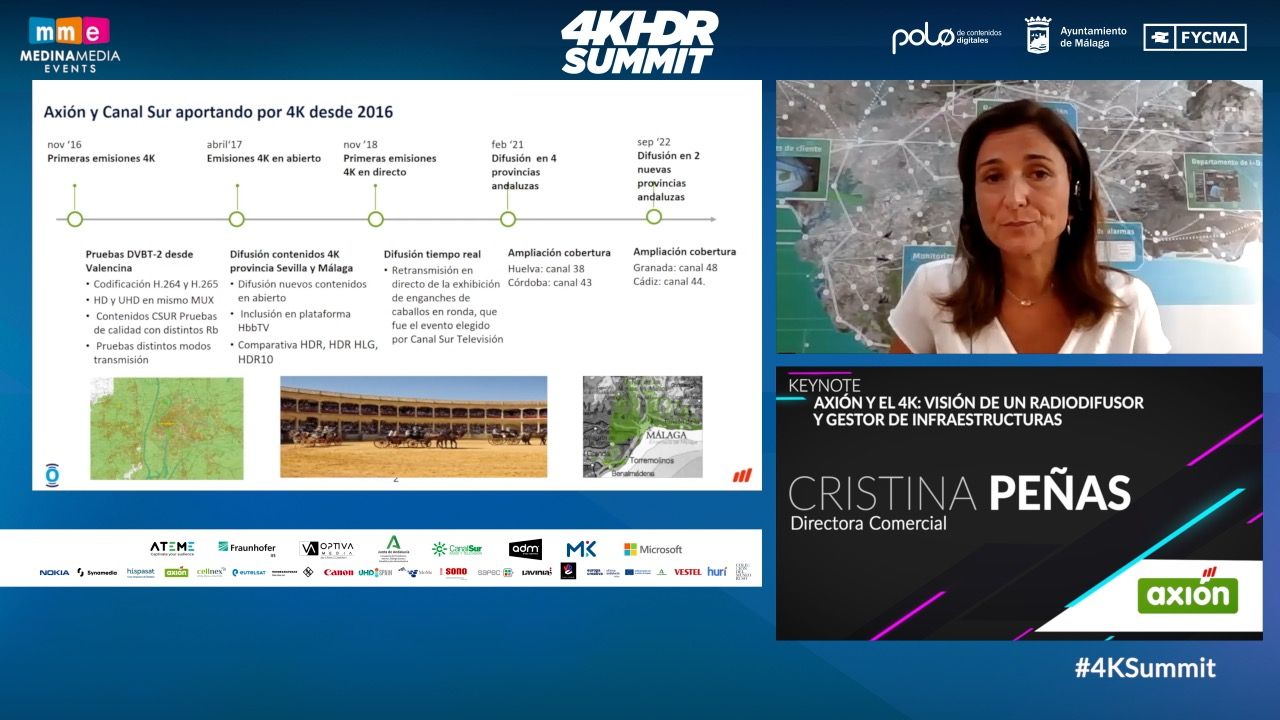
The following two days can be followed through the Medina Media Events platform, prior registration, through the event website. The eighth edition of the 4K HDR Summit has the support of: National Pole of Digital Content, Malaga City Council, Fycma, Junta de Andalucía, ATEME, Fraunhofer, Optiva Media, Canal Sur Radio y Televisión, Grupo ADM, Mediakind, Microsoft, Synamedia, Nokia, Hispasat, Axión, Cellnex, Eutelsat, Rohde & Schwarz, Canon, Sapec, Mome, Vestel, SONO, Hurí, Lavinia, Univrse, Russian Museum Collection, UHD Spain and Creative Europe Media Desk Andalusia.



